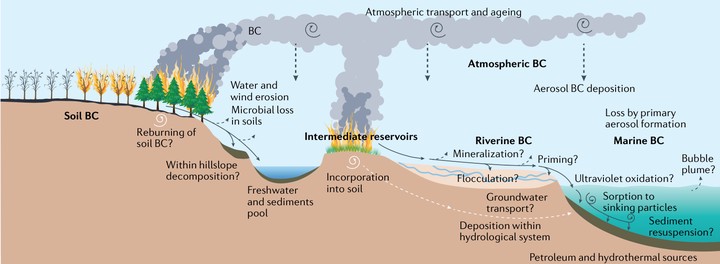The black carbon cycle and its role in the Earth system

Abstract
Black carbon (BC) is produced by incomplete combustion of biomass by wildfires and burning of fossil fuels. BC is environmentally persistent over centuries to millennia, sequestering carbon in marine and terrestrial environments. However, its production, storage and dynamics, and therefore its role in the broader carbon cycling during global change, are poorly understood. In this Review, we discuss BC cycling across the land-to-ocean continuum. Wildfires are the main source of BC, producing 128 ± 84 teragrams per year. Negative climate–BC feedbacks could arise as wildfire increases with anthropogenic warming, producing more BC, which in turn will sequester carbon, but the magnitude of these effects are unknown. Most BC is stored in terrestrial systems with some transported to the ocean via rivers and the atmosphere. However, the oceanic BC budget is not balanced, with known BC removal fluxes exceeding BC inputs. We demonstrate these observed inconsistencies using a simple ocean box model, which highlights key areas of future research. Measurements of BC mineralization and export rates along the land-to-ocean continuum and quantification of previously unexplored sources of oceanic BC are needed to close the global BC budget.